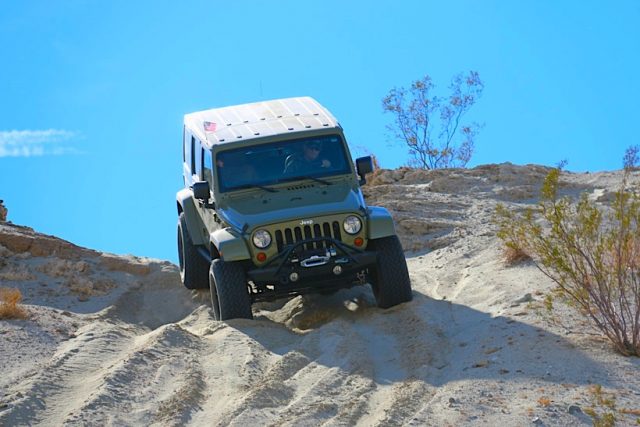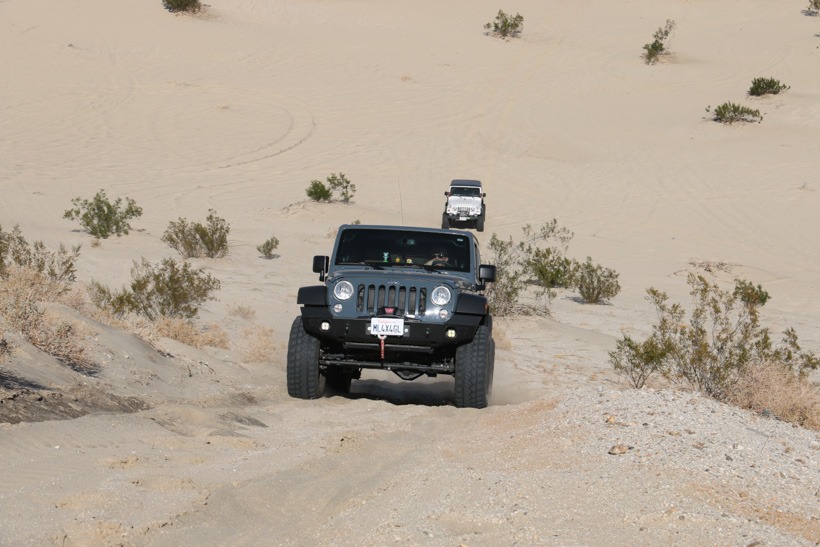This article is the second in a five-part series called “Things to Know”, written by Tom Severin of Badlands Off Road Adventures. Tom is an International 4-Wheel Drive Trainers Association© certified professional 4WD trainer and a Wilderness First Responder (WFR). He is an instructor for the United Four Wheel Drive Association (UFWDA) and the California Association of 4WD Clubs.
Here is what Tom has to say about 4WD driving safety techniques. Enjoy and remember when you are on the trails to tread lightly. The TAP crew has taken four of his classes and highly recommend them for the beginner, intermediate or even the advanced driver who wants to hone in on particular driving/safety techniques. Spending money on training is as important and often more so, than that new gear you want or “need”.
“Four-wheeling is one of the more exciting hobbies you can experience. Going off road opens your eyes to places you would not otherwise see. It also challenges you, as the terrain is far different from what you are accustomed to driving on. You can find yourself in a remote and very hostile environment in just a few hours. Follow these very important rules for a safer and more enjoyable ride.”
- Make your location known beforehand- “Let someone know where you will be and when you expect to return. This applies to all trips, not just those in challenging areas. People have been known to get stuck or lost in relatively easy terrain. Should something happen and you’re unable to leave the area or call for help, your friends or family will know to contact authorities.”
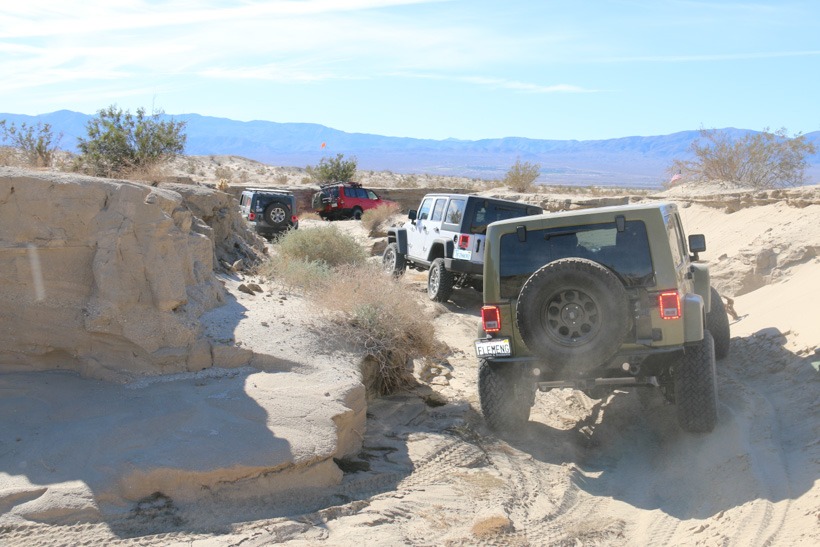
- There’s safety in numbers- “Always have at least one other vehicle along. This ensures that you will have transportation out in the event your vehicle becomes stuck or damaged and can’t be fixed there. Plus, the extra vehicle means additional manpower to help with problems”
- Pack survival gear- “Even a Sunday drive on the beach can turn sour. Pack the proper gear to get you through the night and to handle medical emergencies that may occur.”
- Prevent flying gear- “Tie everything down inside. Your gear will go flying around if you roll over or lay the vehicle on its side. Loose items become missiles which can injure and kill anyone inside.”
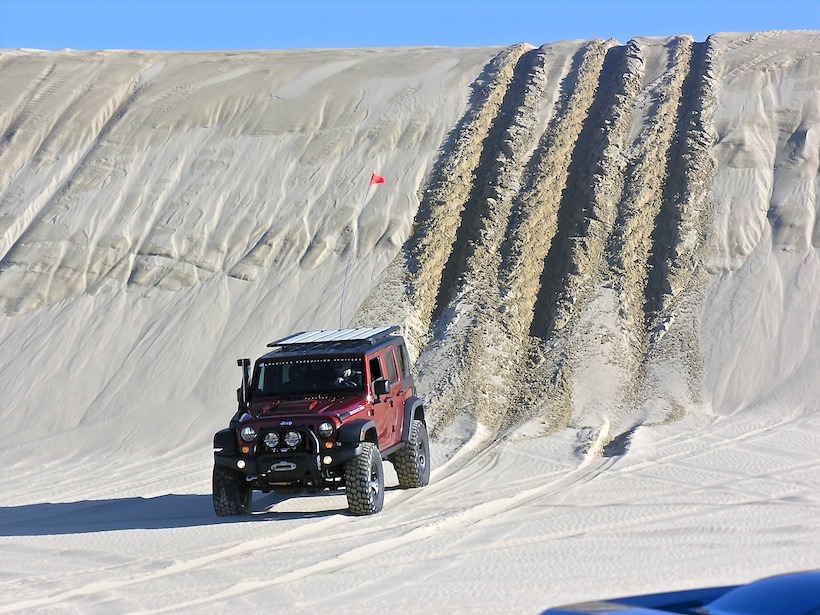
- Buckle up!-“Everyone wears a seatbelt, just like when you drive on paved roads. You and your passengers will get jostled around quite a bit on many of the trails. Plus, the possibility for a rollover or crash exists at any time. That big rock you suddenly hit could cause you or your passengers to go flying out a window. Make sure everyone is belted in.”
- Arms and legs must always remain inside- “Many trails run through narrow passageways. Any arms or legs hanging outside can get torn off by the trees, cliff walls, or rocks just outside your vehicle. If the vehicle begins to tip your instinct is to put your hand out. There is no way you will be able to stop a vehicle this way. Roll your windows up if your can’t control the urge. Also, make sure no one holds onto the roll bar. Their fingers will get smashed in the event of a roll over. Hands can also be injured if you drive under low-hanging branches.”
- Quit when you are tired- “Four-wheeling requires the utmost concentration. Any letdown can lead to an accident and perhaps death. If you feel fatigued at all, pull over and rest, or let someone else drive. Do not force it.”
- Lock it down-“When driving off-road, you are seldom on level ground. Make sure your vehicle will not roll away from you. When you stop, put the vehicle in park, apply the emergency brake, and turn off the engine.”
- Do not hang on a vehicle-“If the vehicle gets stuck in a precarious position, do not try to pull it down or otherwise tip it by hand and absolutely do not climb on the vehicle. Use the proper tools and techniques, and always be a safe distance away. A vehicle can and will crush you if given the chance.”
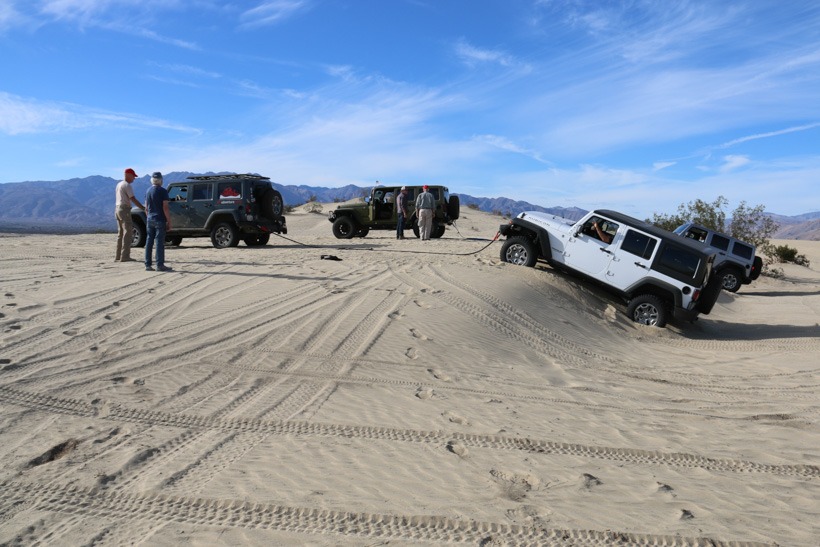
- Be careful when handling winches and high-lift straps- “Treat them with respect. The straps, clevises, and other pieces are under extreme tension when in use. Inspect all parts before using and stand clear while you are trying to recover a vehicle. A failure in gear or rigging can be lethal to you and bystanders.”
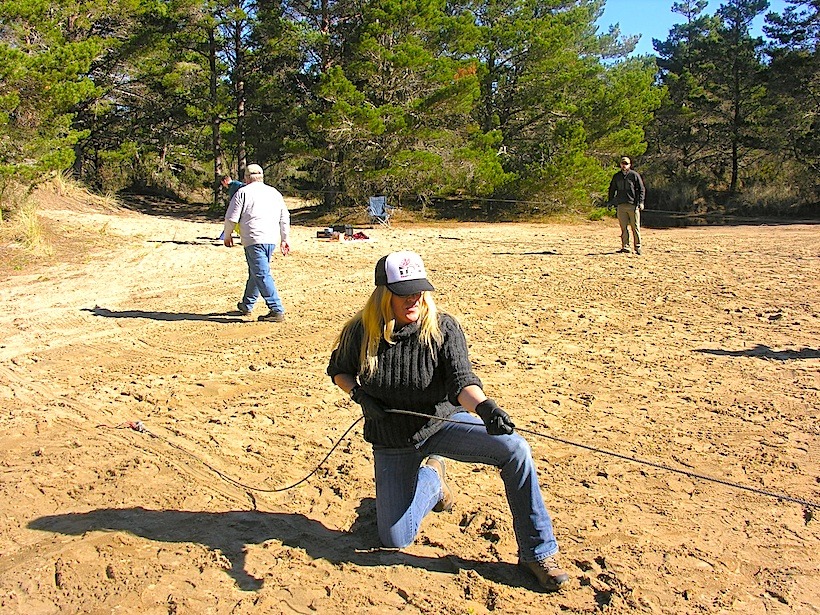
SHARE SOME OF YOUR OFF-ROAD SAFETY RULES! Let us know what has gotten you home safe and happy in our comments section below.
A special thanks to Tom Severin for his off-road driving wisdom. Check out his trainings and trips at 4×4 Training.com
Happy Off-Road Driving!







